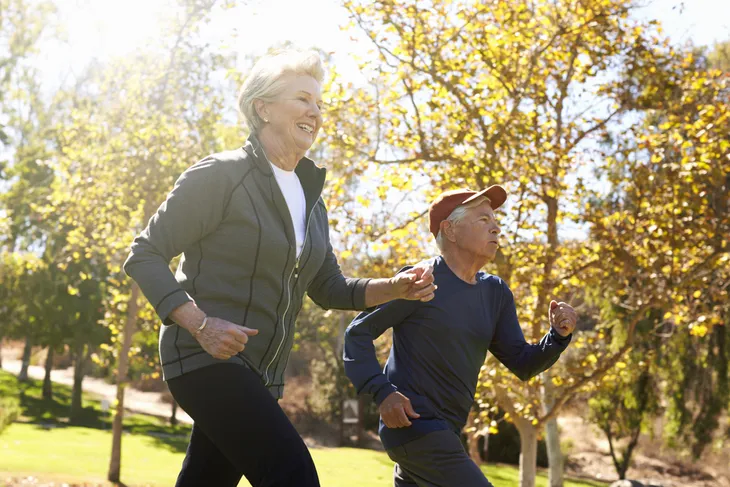When it comes to walking vs. running the need for speed doesn’t always equate to the best workout. There are many reasons why people choose running or walking as their preferred method of exercise. For instance, you might walk in a serene setting to beat stress—or you might choose to run to the beat of lively music to boost your energy levels on a Monday morning.
Either way, both walking and running promote weight maintenance, enhance mood, and promote better heart health. The choice depends on you and your personal goals…
Running vs. Walking for Weight Loss
While walking is a great way to burn calories, in the end running will burn more. In fact, research from the National Institutes of Health finds that running expends 2.5 times more energy vs. walking on a treadmill.
Obviously, you take more steps during a vigorous run vs. a moderate stroll, which in the end translates to a higher amount of calories burned and energy expended. The same study also noted that the runners were able to lose more weight and maintain a slimmer waist lines compared to those who walked for exercise.
Appetite Regulation
Both walking and running have clear, and even similar benefits. However, a study published in the Journal of Obesity found that runners were better able to regulate their appetite compared to walkers.
Appetite regulation comes down to hormones, particularly one hormone known as peptide YY. And studies show that runners tend to just have more of this natural appetite suppressant, which makes them better able to avoid mid-day snack attacks and binge eating at buffets.
Stress on Joints
Regardless of your best intentions, everybody is different and some bodies just can’t endure the stress that running places on the body.
For instance, while walking offers a gentle and much more controlled form of exercise—especially on the joints—running heightens the risk for all sorts of sports-related injuries such as shin splints, quad and hamstring strains, and knee injuries. (If you’re looking for some low impact exercises, check out this article on Low Impact Joint-Friendly Forms of Exercises).
Different Bodies Equals Different Health Needs
In the end, walk or run it’s really up to you! You might burn more calories in a shorter amount of time if you run, but you can glean the same caloric burn if you go for longer walks or use body weights and inclines during your workout.
If running doesn’t feel natural or comfortable to you, start by walking. As you increase your skills, you may be able to start running in the future, or simply increase your resistance and time walking to get similar exercise benefits.
All Cardio Benefits Health
In the end, numerous studies show that regular cardiovascular exercise of any kind keeps blood pressure in check, reduces the risk of diabetes, hypertension, and heart disease.
Most notably, a recent study entitled, the Runners and Walkers Health Study, pointed out that both walkers and runners similarly reduced their changes of age-related cataracts compared to those who led more sedentary lifestyles. So there it is, baby, we were born to run…or walk…whatever you prefer!








